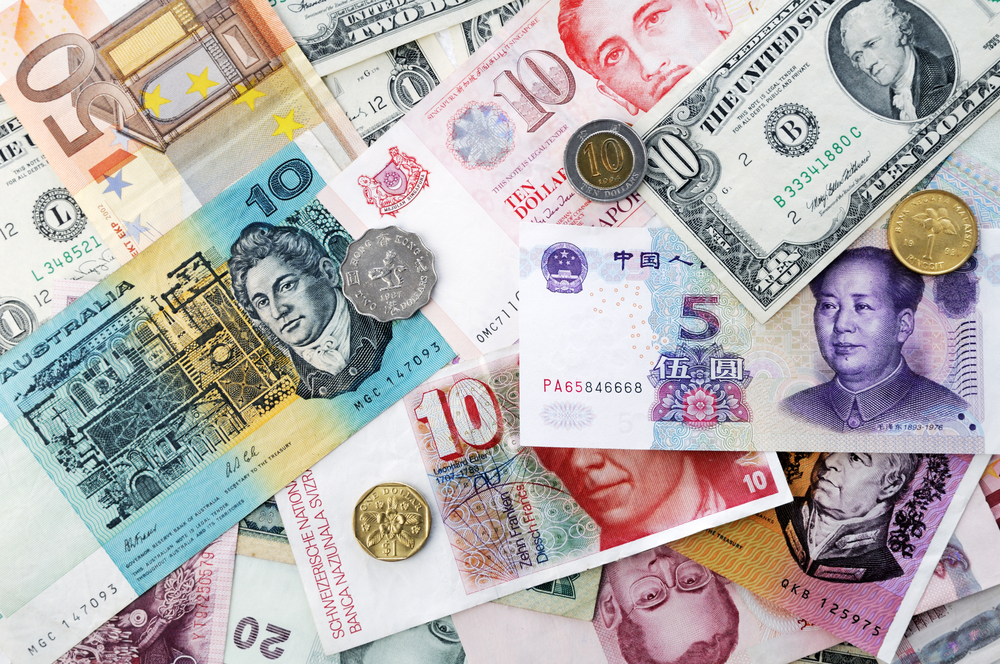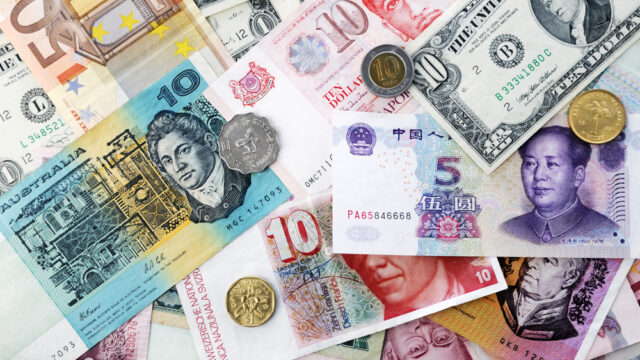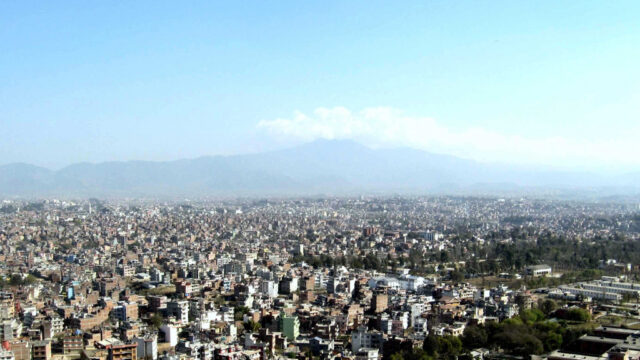Nepal Rastra Bank (NRB) has officially released the exchange rates for foreign currencies for today. According to the central bank, the buying rate for one US dollar has been set at NPR 136.46, while the selling rate stands at NPR 137.06. The exchange rates for various other foreign currencies have also been determined, reflecting the fluctuations in the international currency market.
As per the NRB report, the exchange rate for the European Euro (EUR) is NPR 146.99 for buying and NPR 147.63 for selling. Similarly, the British Pound Sterling (GBP) has been set at NPR 176.42 for buying and NPR 177.19 for selling. The Swiss Franc (CHF) is valued at NPR 154.51 for buying and NPR 155.19 for selling.

Among the other major currencies, the Australian Dollar (AUD) is being traded at a buying rate of NPR 85.86 and a selling rate of NPR 86.24, while the Canadian Dollar (CAD) stands at NPR 95.24 for buying and NPR 95.66 for selling. The Singapore Dollar (SGD) has been set at NPR 101.66 for buying and NPR 102.10 for selling. These rates reflect the central bank’s assessment of the ongoing global financial trends and their implications for the Nepalese market.
Meanwhile, the Japanese Yen (JPY) is being traded at NPR 9.05 for buying and NPR 9.09 for selling per 10 units. The Chinese Yuan (CNY) stands at NPR 18.78 for buying and NPR 18.87 for selling per unit. The Saudi Arabian Riyal (SAR) is valued at NPR 36.38 for buying and NPR 36.54 for selling, while the Qatari Riyal (QAR) has been set at NPR 37.44 for buying and NPR 37.60 for selling. These rates indicate the variations in the global currency market and their influence on Nepal’s foreign exchange sector.
According to the NRB, the exchange rate for the Thai Baht (THB) has been set at NPR 4.01 for buying and NPR 4.03 for selling per unit. The United Arab Emirates Dirham (AED) stands at NPR 37.15 for buying and NPR 37.32 for selling. Additionally, the Malaysian Ringgit (MYR) has been set at NPR 30.75 for buying and NPR 30.89 for selling. South Korean Won (KRW) per 100 units is traded at NPR 9.29 for buying and NPR 9.34 for selling. The Swedish Krona (SEK) has been set at NPR 13.57 for buying and NPR 13.63 for selling, whereas the Danish Krone (DKK) stands at NPR 19.70 for buying and NPR 19.79 for selling.
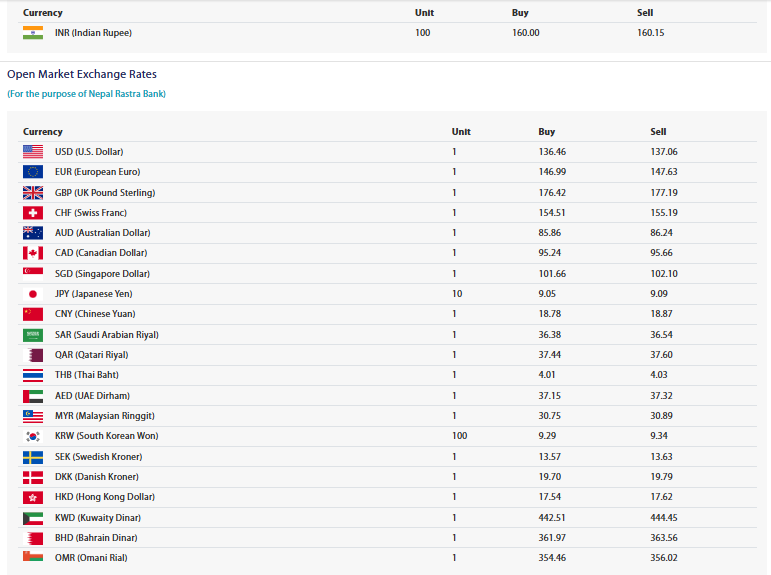
Furthermore, the Hong Kong Dollar (HKD) has been set at NPR 17.54 for buying and NPR 17.62 for selling. The Kuwaiti Dinar (KWD), one of the highest-valued currencies, is being traded at NPR 442.51 for buying and NPR 444.45 for selling. The Bahraini Dinar (BHD) has been set at NPR 361.97 for buying and NPR 363.56 for selling, while the Omani Riyal (OMR) is valued at NPR 354.46 for buying and NPR 356.02 for selling.
The exchange rate for the Indian Rupee (INR) per 100 units has been determined at NPR 160.00 for buying and NPR 160.15 for selling. Since the Nepalese currency is pegged to the Indian Rupee, the fluctuations in the INR also have a significant impact on Nepal’s exchange rate policy.
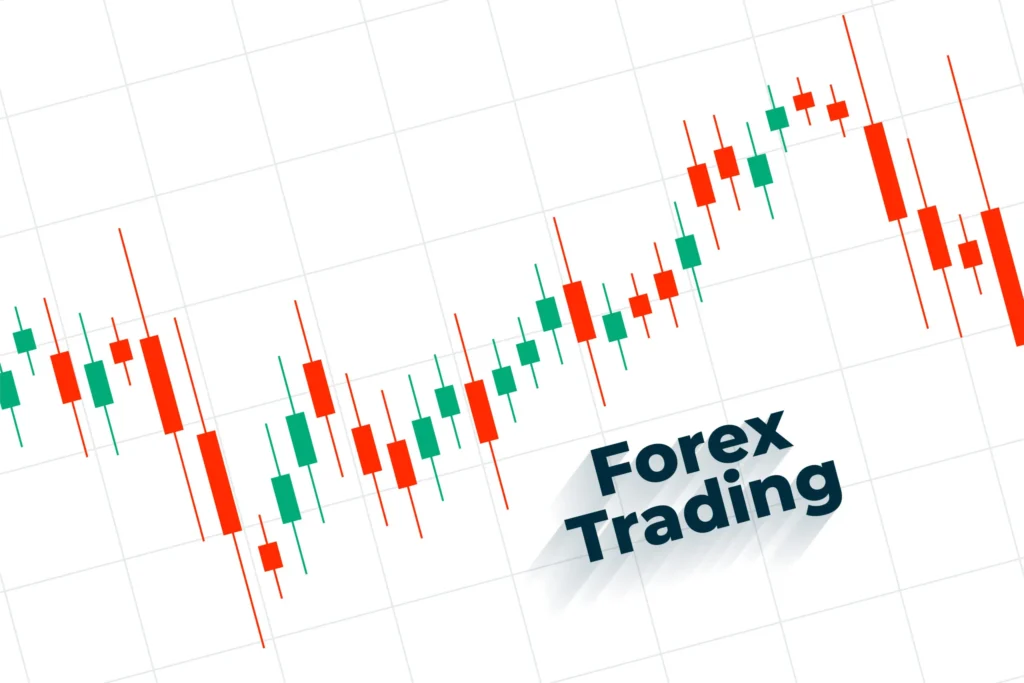
The Nepal Rastra Bank has stated that these rates are subject to change at any time as per market demand and supply conditions. It has also noted that commercial banks may have different exchange rates than the ones set by the central bank, as they adjust their rates based on internal policies and transaction volumes.
For the most up-to-date exchange rates, Nepal Rastra Bank advises individuals and businesses to check its official website. With the global financial landscape constantly evolving, monitoring exchange rates remains crucial for businesses engaged in international trade and travelers planning foreign transactions. The fluctuations in foreign exchange rates have a direct impact on imports, exports, remittances, and the overall financial stability of Nepal.
The exchange rate updates from Nepal Rastra Bank play a critical role in guiding both individuals and financial institutions in making informed decisions regarding foreign currency transactions. The central bank continues to monitor the forex market and adjust its policies to ensure economic stability while keeping Nepal connected to global financial trends.
